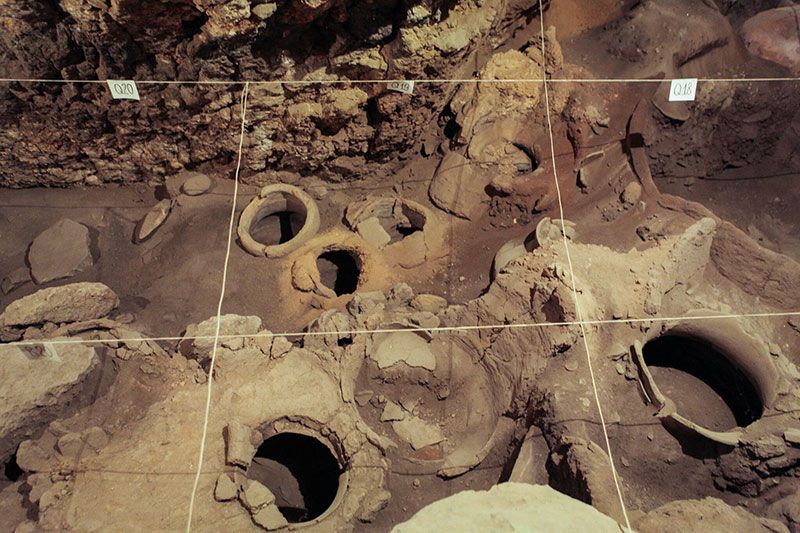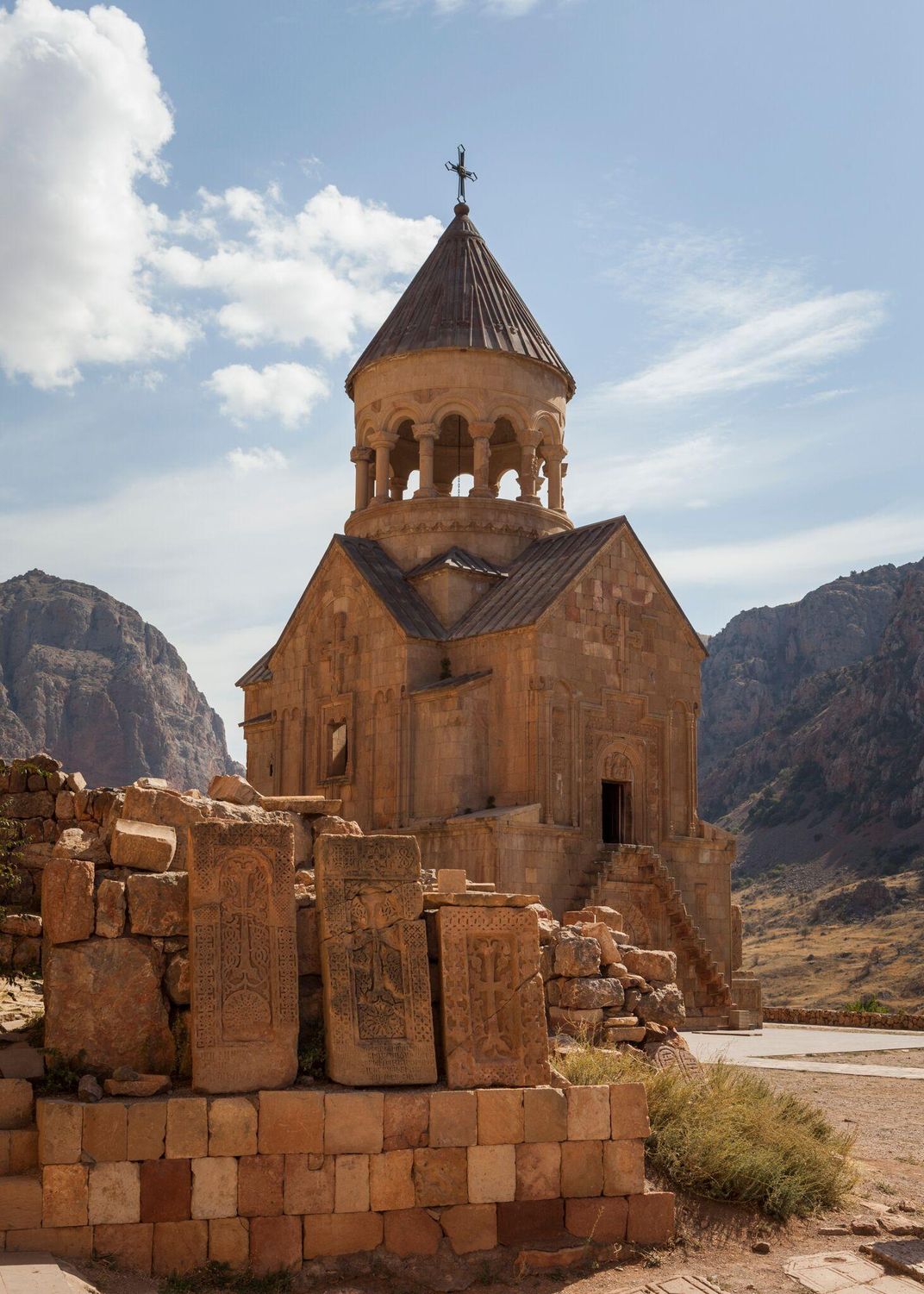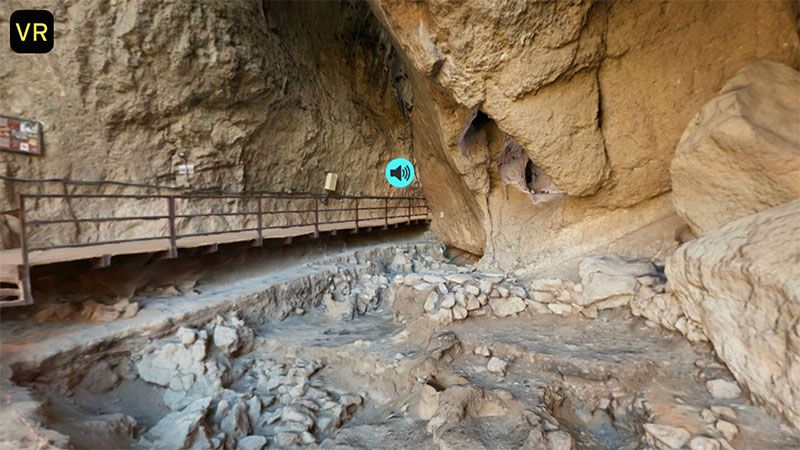This Free Virtual Reality App Drops Users in the Heart of Historic Armenia
Painstaking imaging of cultural heritage sites worldwide has the potential to usher in a new era of participatory preservation efforts
/https://tf-cmsv2-smithsonianmag-media.s3.amazonaws.com/filer/c4/ec/c4ecb769-e98e-45f4-bf66-080590b41942/mva3.jpg)
Armenia’s medieval monastery at Noravank, nestled amid the craggy slopes of the country’s mountainous terrain, is a striking exemplar of Armenian architectural tradition. Elegant geometrical symmetries abound in its places of worship, and the ancient technique of khachkar—the carving of ornate crosses into steles—is on display outside, where several of the tall stone slabs watch over the complex like holy sentinels. A few miles to the north lies the cave system known as Areni-1, where the earliest known evidence of both human shoes and winemaking was uncovered by archaeologists.
Few American citizens are familiar with these awe-inspiring historical sites, and fewer still have had a chance to visit. With the aid of a brand-new virtual reality app titled My Virtual Armenia, however, anyone in possession of a smartphone can tour the sites at their own pace, taking in the scenery with a panoramic “Magic Window” view and listening to audio commentary from regional experts.
The app—now freely downloadable on both iOS and Android devices—is the product of deep collaboration between the Smithsonian, the world heritage preservation organization CyArk, and the educational app developer FarBridge. Attendees of this year’s Smithsonian Folklife Festival, which is celebrating the rich culture of Armenia through live performances and craft demonstrations on the National Mall, are invited to use the app to enhance their experience. But users all over the world, not just in Washington, D.C., will be able to explore the wonders of Noravank and the Areni caves in high-resolution digital form even after the festival.

CyArk—a stylized shortening of “cyber archive”—has been in the business of immortalizing heritage sites digitally since their founding in 2003. The creator of the organization, Iraqi expat Ben Kacyra, is a civil engineer by trade, one who pioneered in the field of portable laser scanning. During the chaos of the second Iraq War, Kacyra found he had both the will to see Iraqi heritage protected from destruction at the hands of terrorists and the technological means to help make that happen.
Since those early days, Kacyra’s team has traveled to dozens of sites all over the globe, painstakingly scanning them from a multitude of locations and angles to generate comprehensive digital point maps of what exactly they look like. Kacyra has modeled sites ranging from Ancient Thebes and Corinth to Chichén Itzá and Mount Rushmore.
Molly Fannon, director of the Smithsonian's Office of International Relations, recalls an auspicious encounter with Elizabeth Lee, CyArk’s vice president of programs and development, at a 2014 United Nations colloquium on the preservation of cultural heritage. “We got to speaking about the fact that people who worry about cultural heritage disappearing often speak to themselves and not others in other sectors,” Fannon says, and how detrimental such a cloistered academic approach could be in the long term.

Fannon remembers lamenting with Lee the fact that so much cultural heritage work winds up taking the form of damage control—figuring out how to mitigate destruction in the wake of a terrorist incident or national disaster. The two felt passionately that the global community of cultural heritage advocates could do better, preparing for and helping to prevent these sorts of tragedies rather than simply cleaning up in their wake. “If we really care about cultural heritage sustainability,” Fannon says, “we have to get out of the mindset of only looking at it after the earthquakes or after the bombs.”
Fannon and Lee’s hope was that, by making the beauty and significance of cultural heritage available to a wider audience, people all over the world would be moved to contribute to efforts to protect sensitive sites, and to respond loudly on the international stage were the sanctity of those sites to be violated.
At the time of this meetup, Fannon was overseeing the early phases of an ambitious Smithsonian-USAID partnership program called My Armenia, which aimed to bring Armenia’s cultural treasures to the fore of American national discourse and inspire Americans to stand up on behalf of Armenian cultural heritage. Once she and Lee crossed paths, Fannon sensed that a supplementary Smithsonian-CyArk collaboration was meant to be.
As the 2018 Folklife Festival (which just got underway this Wednesday) drew near, Smithsonian and CyArk personnel worked intensively to scan the Noravank monastery and Areni-1 caves and convert them into usable packets of data. Also integral to the laser-scanning campaign were the Armenian Ministry of Culture and passionate high school-age volunteers from the acclaimed Armenian extracurricular program Tumo. “Tumo is this fantastic organization that leverages the arts to teach technological skills to Armenian teenagers,” Fannon explains. “It’s unbelievable.”

Having acquired their raw data, CyArk and the Smithsonian were faced with the challenge of developing a user-friendly app. For this portion of the process, CyArk enlisted the help of a young app development company called FarBridge. FarBridge had lent a hand to CyArk before, assembling the Oculus virtual reality experience Masterworks: Journey Through History using CyArk point maps of Mount Rushmore, Thai temples, a Peruvian archaeological dig, and more. FarBridge CEO Patrick Curry was excited to collaborate with CyArk again on the Armenia app, which FarBridge optimized to reach as wide an audience as possible.
“This is the first app that we’ve done with this new Magic Window feature, where you don’t need any virtual reality-specific headset,” he says. “It can run on any smartphone, and there’s two billion of those all over the world.”
Fannon is quick to note the limitations of virtual reality, an individual-directed medium which lacks the valuable communal dynamic of a museum outing. “I don’t think in any way it’s a magic bullet,” she says. But what My Virtual Armenia does do is bring the value of Armenian cultural heritage out of the abstract and into the lives of millions—and that, she says, is crucially important.
The Folklife Festival provides the best of both worlds in terms of visitor engagement: guests are invited to spend time on their own visiting distant Armenia via the app, but are also treated to live performances and group workshops—the more communal activities that Fannon says are just as vital in getting the word out.
“In a matter of minutes,” Curry says, “we can go from someone being at a festival learning about Armenian culture or having Armenian food to teleporting them to these sites with photorealistic graphics that really look like you’re there.”
Fannon sees the My Virtual Armenia app as an exciting test case of what those passionate about cultural heritage preservation can do to capture the attention of a larger public. “We think of protecting cultural heritage as an ivory tower exercise, when in fact we need to be open to creative representations of this asset we hold as human beings,” she says, “so that culture itself becomes more resilient, and can weather both literal and figurative storms.”
/https://tf-cmsv2-smithsonianmag-media.s3.amazonaws.com/accounts/headshot/DSC_02399_copy.jpg)
/https://tf-cmsv2-smithsonianmag-media.s3.amazonaws.com/accounts/headshot/DSC_02399_copy.jpg)